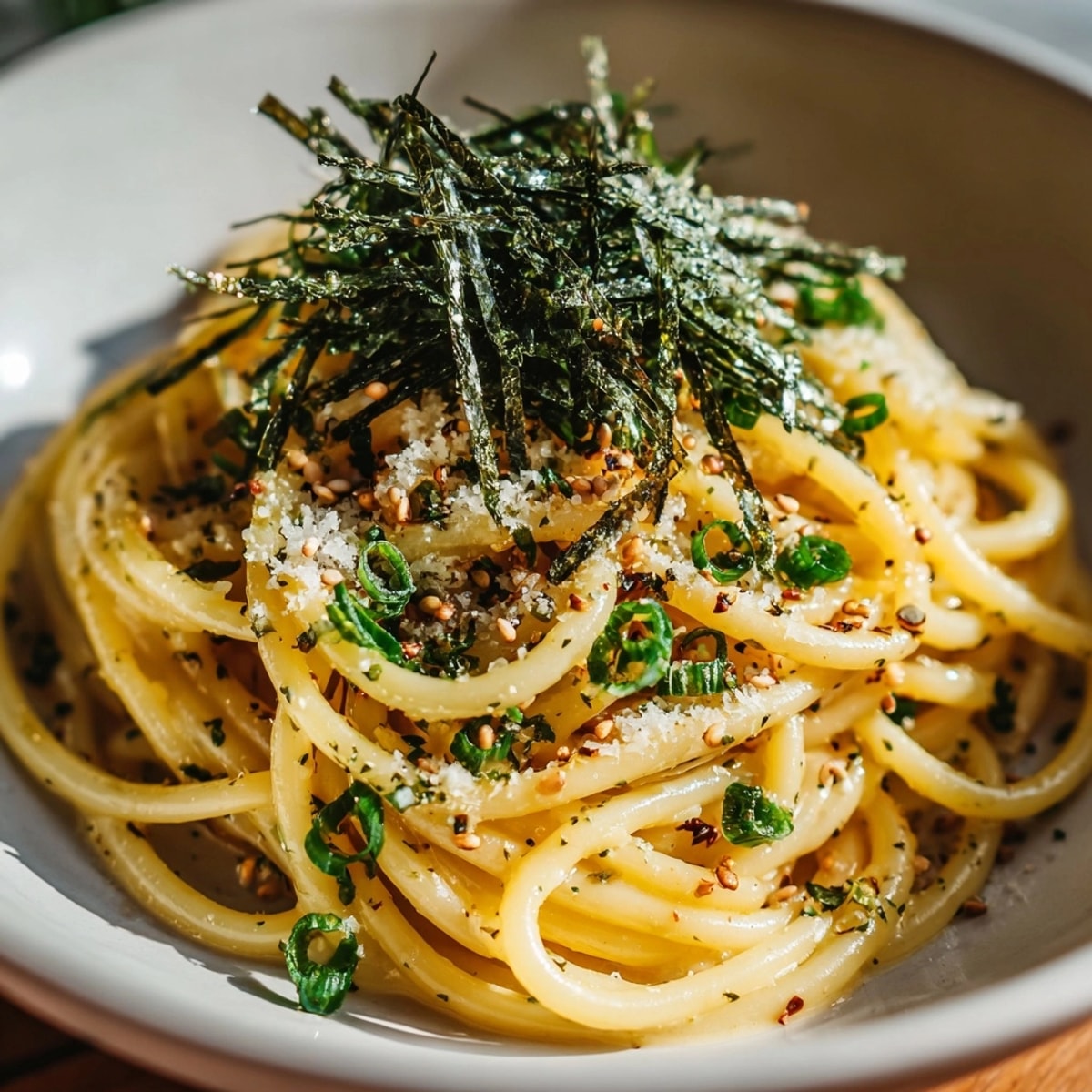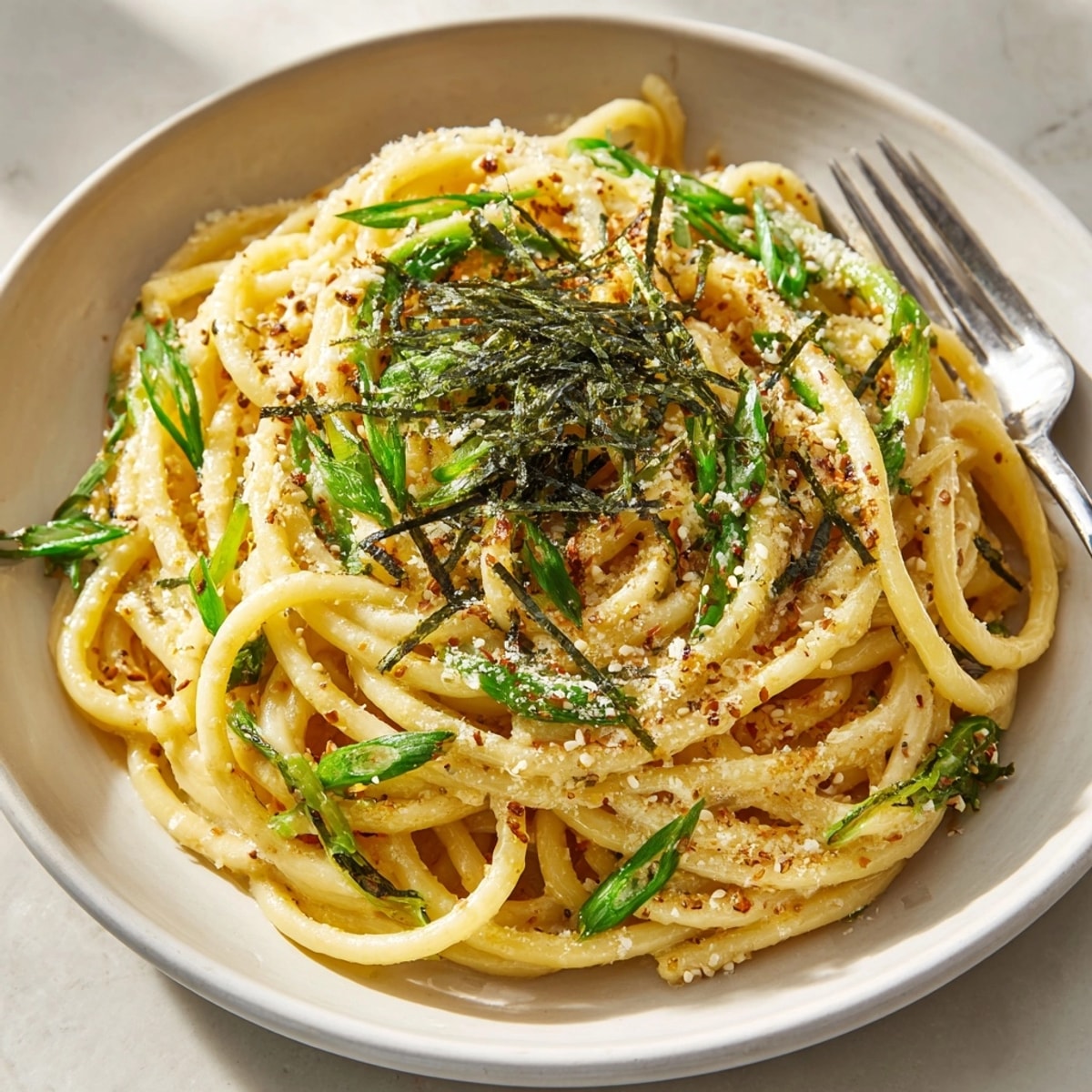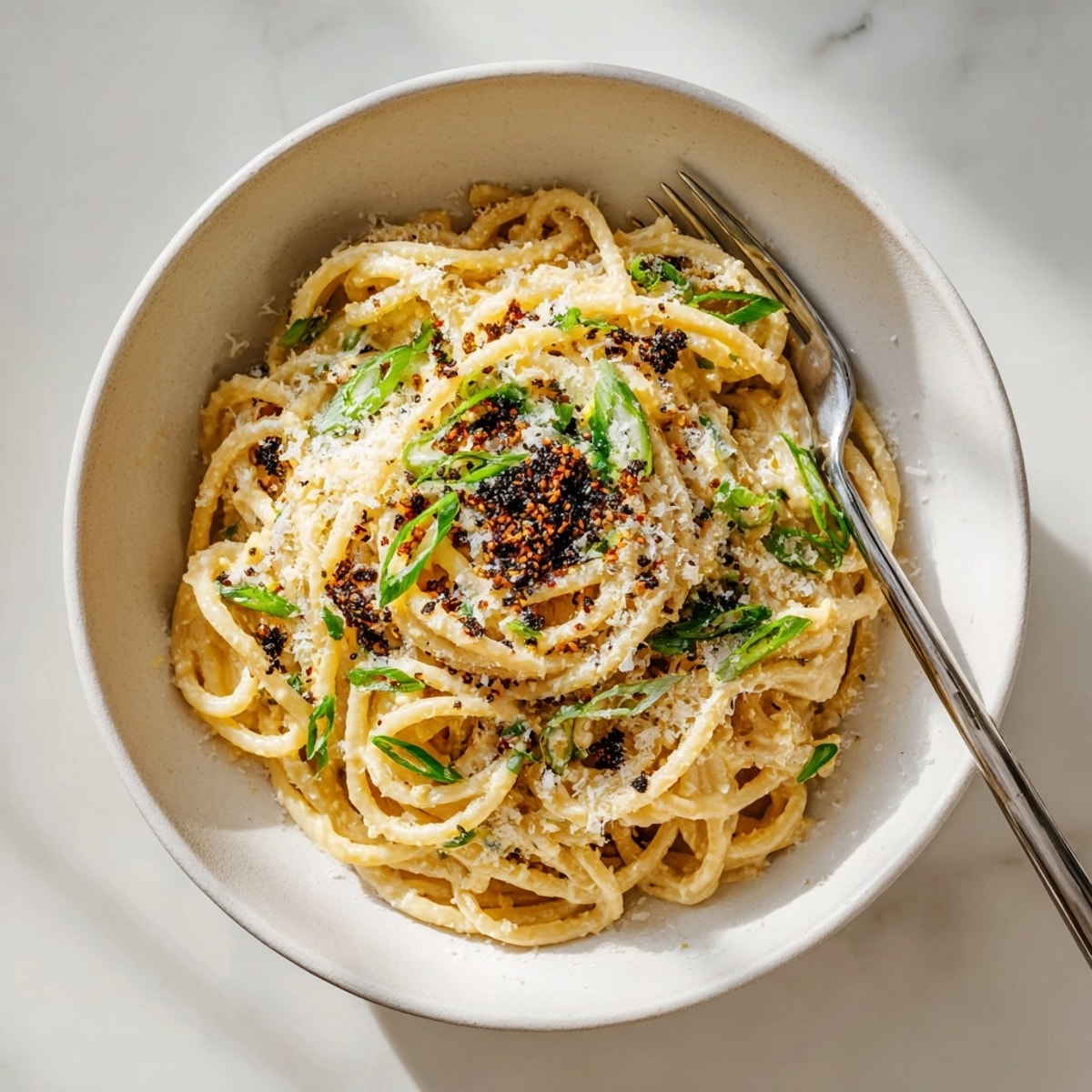 Save
Save This luxurious pasta dish combines the rich umami flavors of Japanese cuisine with classic Italian pasta traditions. The silky miso butter sauce clings perfectly to the bucatini strands, while the nori flakes add a delightful oceanic finish that elevates this dish beyond ordinary pasta.
I first created this recipe when experimenting with ways to use leftover miso paste from making soup. My family was skeptical about the Japanese Italian fusion but ended up requesting it weekly after the first bite. The combination of butter and miso creates a magical sauce that transforms simple pasta into something extraordinary.
Ingredients
- Bucatini pasta: 400 g bucatini pasta provides the perfect shape for this sauce with its hollow center that captures the creamy mixture
- Unsalted butter: 60 g unsalted butter use high quality European style butter with higher fat content for best results
- White miso paste: 2 tbsp white miso paste mild and slightly sweet variety works best for balancing the sauce
- Heavy cream: 2 tbsp heavy cream adds richness and helps emulsify the sauce
- Soy sauce: 1 tbsp soy sauce provides depth and enhances the umami flavor profile
- Garlic clove: 1 garlic clove fresh minced just before cooking releases the most aromatic compounds
- Fresh lemon juice: 1 tsp fresh lemon juice brightens the rich sauce with subtle acidity
- Nori: 2 sheets nori look for premium Japanese brands with deep flavor and crisp texture
- Spring onions: 2 spring onions select ones with bright green tops for best visual contrast and flavor
- Toasted sesame seeds: optional but adds pleasant textural contrast and nutty notes
- Parmesan cheese: optional for those wanting a more Italian finish to the dish
Instructions
- Boil the Pasta:
- Bring a large pot of water to a rolling boil and add a generous amount of salt until it tastes like seawater. Add the bucatini and cook until al dente according to package instructions usually 9 to 11 minutes. The pasta should have a slight resistance when bitten. Reserve 1 cup of starchy pasta water before draining this is crucial for creating a silky sauce.
- Prepare the Miso Butter:
- While pasta cooks combine softened room temperature butter and white miso paste in a small bowl using a fork to cream them together until completely smooth with no streaks. The mixture should have a uniform pale beige color. Mix in the heavy cream soy sauce minced garlic lemon juice and freshly ground black pepper until fully incorporated. The mixture will look slightly broken at this stage which is normal.
- Create the Sauce:
- Return the drained hot pasta to the empty cooking pot and set over low heat. Add the miso butter mixture and a half cup of the reserved pasta water. Use tongs to continuously toss the pasta for about 2 minutes until the sauce becomes glossy and coats each strand evenly. If the sauce seems too thick add more pasta water a tablespoon at a time until you reach the perfect silky consistency. The starch in the water helps emulsify the sauce.
- Finish and Garnish:
- Divide the pasta among warmed bowls working quickly while the sauce is at its creamiest. Crumble or sprinkle the nori sheets generously over each portion followed by the sliced spring onions. If using add a light sprinkle of toasted sesame seeds and freshly grated Parmesan. The heat from the pasta will slightly wilt the nori releasing more of its oceanic aroma.
 Pin it
Pin it The white miso paste is truly the heart of this recipe. I discovered its transformative power with pasta after years of only using it in traditional Japanese soups. Its sweet fermented flavor creates a depth that would otherwise require hours of cooking to achieve. My daughter who typically avoids anything unfamiliar now requests this pasta for her birthday dinner each year.
Make Ahead Options
This miso butter pasta is best enjoyed immediately after preparation but you can prepare components ahead of time to streamline the cooking process. The miso butter mixture can be made up to three days in advance and stored in an airtight container in the refrigerator. Simply bring it to room temperature before using. You can also slice the spring onions and store them in a damp paper towel in the refrigerator for up to a day before serving.
Perfect Pairings
The umami richness of this pasta calls for beverages that can complement without overwhelming. A crisp dry white wine like Pinot Grigio or Sauvignon Blanc provides refreshing acidity that cuts through the creamy sauce. For a complete Japanese Italian fusion experience try serving with chilled premium sake which enhances the miso flavors beautifully. For non alcoholic options a yuzu spritzer or iced green tea makes an excellent accompaniment.
Ingredient Substitutions
This recipe is wonderfully adaptable to what you have on hand. If bucatini is unavailable spaghetti or linguine make excellent substitutes though they lack the hollow center that captures extra sauce. Red miso can replace white miso for a stronger more intense flavor profile. Plant based butter and cashew cream work well for a vegan version. No nori? Try furikake Japanese rice seasoning or even finely chopped toasted seaweed snacks as an alternative garnish.
Seasonal Adaptations
Spring version add blanched asparagus tips and fresh peas Summer enhancement incorporate corn kernels and cherry tomatoes Fall variation mix in roasted butternut squash cubes and sage Winter comfort add sautéed mushrooms and a drizzle of truffle oil
 Pin it
Pin it This dish is a delightful fusion that offers complex flavors with simple preparation. Enjoy the unique umami profile that will have everyone asking for seconds.
Frequently Asked Questions
- → How can I make this pasta fully plant-based?
Swap in plant-based butter and dairy-free cream. Use vegan Parmesan or omit cheese, and check all labels for animal products.
- → What type of miso is best for the sauce?
White miso (shiro miso) is recommended for a delicate sweet-umami balance that won’t overpower the creamy sauce.
- → Can I substitute bucatini with another pasta?
Bucatini's hollow shape holds the sauce perfectly, but spaghetti or linguine can be used for a similar result.
- → What’s the best way to garnish for added flavor?
Generously top with shredded nori, sliced spring onions, and toasted sesame seeds. Grated Parmesan adds depth if desired.
- → Is it possible to add vegetables or proteins?
Sautéed mushrooms or spinach blend in seamlessly; for added protein, try tofu cubes or edamame.